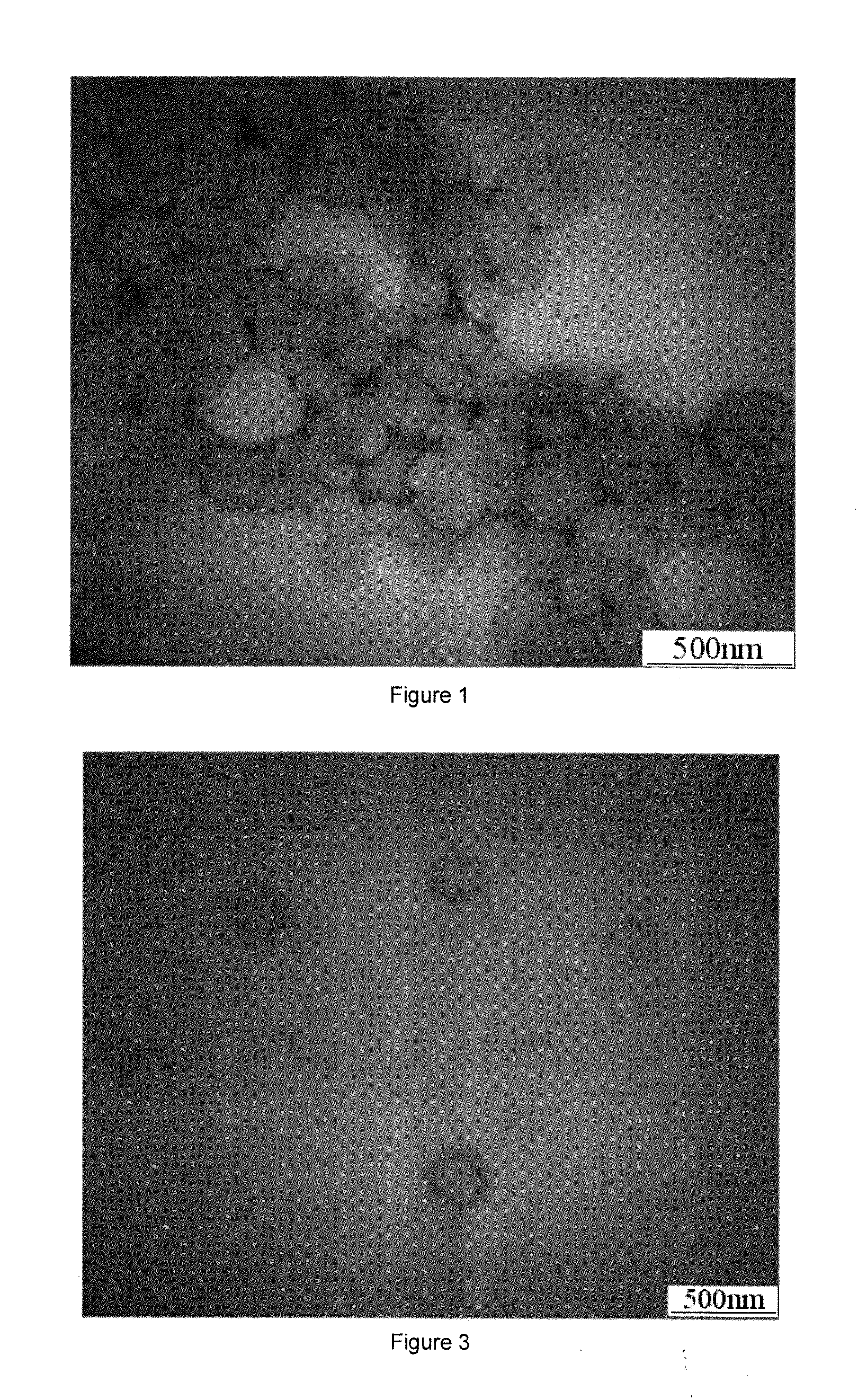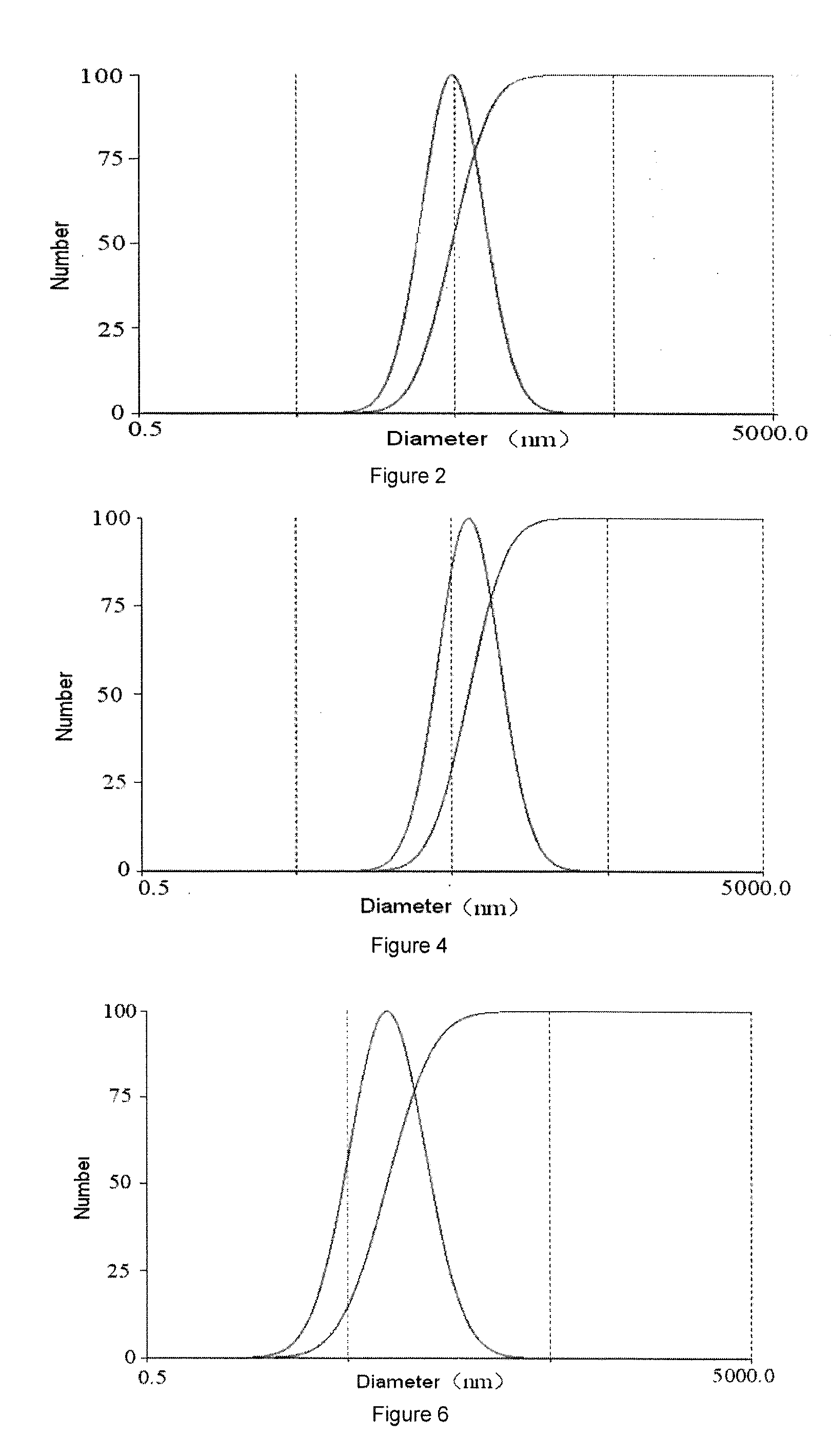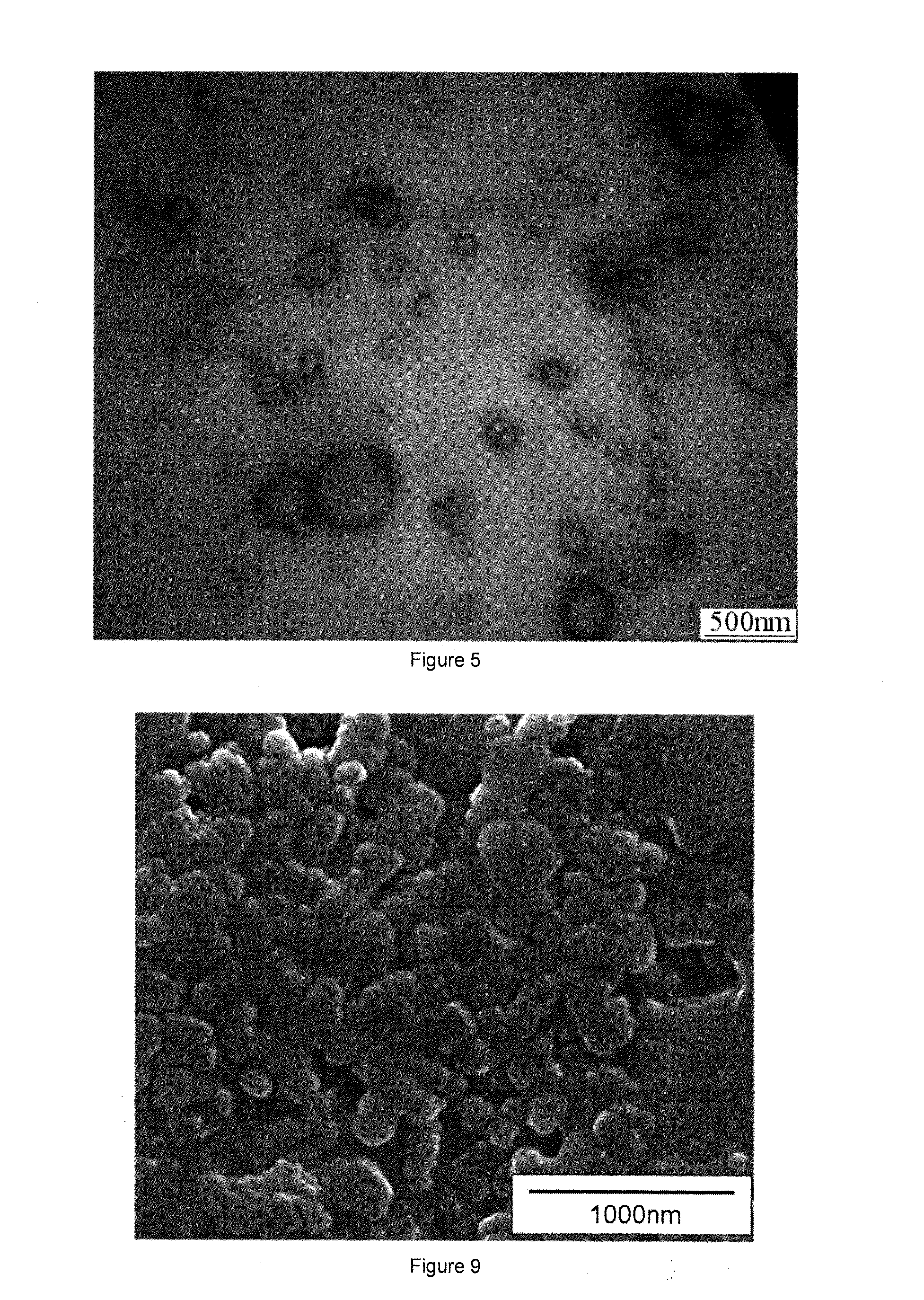Hybrid lipid compounds based on pentaerythritol, intermediates, preparation methods and use thereof
a technology of pentaerythritol and lipid compounds, applied in the field of biomedical materials, can solve the problems of encapsulation of drugs, hampering the practical application of liposomes, and encapsulation of drugs is not easy to be absorbed, and achieves good biocompatibility, low toxicity, and high stability
- Summary
- Abstract
- Description
- Claims
- Application Information
AI Technical Summary
Benefits of technology
Problems solved by technology
Method used
Image
Examples
example 1
[0122]The hybrid lipid compound based on pentaerythritol in this embodiment with a constructional formula
Wherein:
[0123]R1 is C6˜C18 alkyl, R2 is C6˜C18 alkyl, R5 is one among the group consisting of —CO(CH2)5N(CH3)2(CH2)3Si(X)3Y, —CO(CH2)2CONH(CH2)3Si(X)3, —CO(CH2)3CONH(CH2)3Si(X)3 and —CONH(CH2)3Si(X)3, in which X is ethoxy or methoxy, Y is the halogenated group; a is 2 or 3.
[0124]The liposomes prepared from the hybrid lipid compound in this embodiment have uniform size, silicate network surface and higher stability. When surfactant Triton X-100 (TX-100) was added to the liposomes solution, size changes of liposomes was tested, and conventional liposomes made from phospholipids (DSPC) which were used as control under the same conditions were compared to examine the stability of the cerasome. When 30 times amount of TX-100 solution were added, sizes of liposomes (cerasome) derived from the hybrid lipid of the present invention remained unchanged, while traditional liposomes from the...
example 2
[0125]The difference between the present embodiment with the embodiment 1 is that the said halogenated group in the present embodiment is Cl, Br or I. Other description is the same as embodiment 1.
example 3
[0126]The difference between the present embodiment with the embodiment 1 or embodiment 2 is that the said R1 in the present embodiment is hexyl, octyl, undecyl, dodecyl, tridecyl, tetradecyl, fifteen alkyl, hexadecyl, seventeen alkyl or octadecyl. Other description is the same as embodiment 1 and embodiment 2.
PUM
| Property | Measurement | Unit |
|---|---|---|
| Temperature | aaaaa | aaaaa |
| Temperature | aaaaa | aaaaa |
| Temperature | aaaaa | aaaaa |
Abstract
Description
Claims
Application Information
 Login to View More
Login to View More - R&D
- Intellectual Property
- Life Sciences
- Materials
- Tech Scout
- Unparalleled Data Quality
- Higher Quality Content
- 60% Fewer Hallucinations
Browse by: Latest US Patents, China's latest patents, Technical Efficacy Thesaurus, Application Domain, Technology Topic, Popular Technical Reports.
© 2025 PatSnap. All rights reserved.Legal|Privacy policy|Modern Slavery Act Transparency Statement|Sitemap|About US| Contact US: help@patsnap.com



